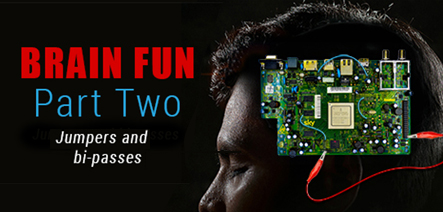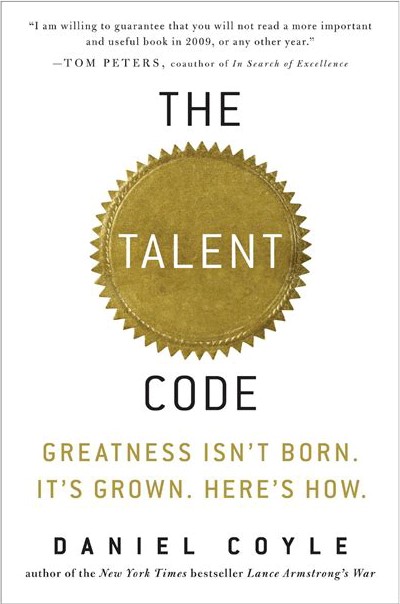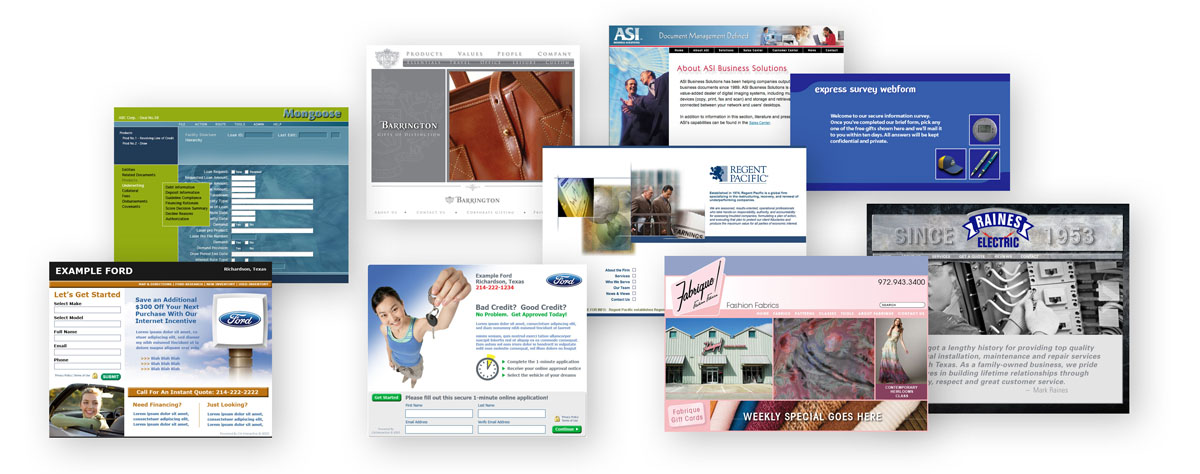Jumpers and Bi-Passes

This is Part Two from a two-part series of related stories.
To see part one, CLICK HERE.
In 1989, I was a freelance employee at DFW’s explosively growing wonderchild of the telecom industry. They produced state-of-the-art switches for landline telephone service. In an effort to maintain their cutting-edge image, they spent nearly $100,000 on their annual report that year and the eye-catching centerpiece of that report was the front cover.
A buff young male model was hired and dressed like the ultimate telecom technician, kneeling before an open switch cabinet backgrounded by a seemingly infinite aisle of identical cabinets. He was gingerly inserting the latest and greatest circuit board into the cabinet, the open door of which sported the company’s distinctive logo. The lighting was perfect. The model’s hair, manicured nails, and expression were perfect. The state-of-the-art board was perfect…almost.
The fly in the ointment was the single tiny blue wire, looping across the top edge of the board and connecting two previously independent elements. “Blue wires” as they were known in the industry, were jumpers used to either compensate for a previously undetected flaw in the circuit board or to provide an enhancement that was developed post-production.
Unfortunately, neither the photographer, nor the art director, nor the set designer, nor anyone in the whole fru-fru ad agency that produced the annual report, had the vaguest idea what a blue jumper indicated — and there it was, front and center on the annual report! People lost their jobs. Higher-ups received dire threats and I heard that one executive actually dodged a crystal whiskey tumbler hurled in his direction.
That’s a lot of lead-in for a story but it was a scene fraught with emotion and it illustrates a major misconception, held first by the company’s management and second, by you and I. Nothing remains state-of-the-art for more than a day and our brains, just like those circuit boards, need constant upgrades lest we expedite their journey down the road to obsolescence along with those beautiful cabinets of landline switches.
New Discoveries in Neuroscience
Due to recent advances in medical imaging, like Positron Emission Tomography (PET), Functional Magnetic Resonance Imaging (FMRI), and Transactional Magnetic Stimulation (TMS), scientists can literally peer into the brain as it works. Their recent discoveries are staggering. Whereas, up until ten years ago, scientists believed the brain stopped developing sometime in our younger years, they now understand that it continues to grow and evolve until the day we die. That’s great news but the even better news is that we can continuously improve our own brains as long as we’re breathing. Turns out positive thinking is not just a placebo.
The Hardware
Brains are not unlike computers. They’re essentially a bucket of closely packed and electrically charged storage devices called neurons. More important, those neurons resemble a happy, homogenous family who enjoy keeping each other up on the latest news. Every time we hear a word, see a color, smell a fart, or taste a jalapeño, those neurons start dancing and communicating with other neurons which have previously encountered a similar sensation. Those connections are called neural pathways and comprise what we refer to as “experience”. They also grow with every subsequent use.
Repeated use of neural pathways causes our brains to actually create myelin, a type of insulation around the pathways which increases their ability to transmit signals. Habitual use of the same neural pathways creates neural feedback loops that operate unseen and unrecognized by our conscious minds but they drive every thought we think and every action we take. With enough repetition – say 10,000 hours of practice per Malcolm Gladwell – those tiny neural pathways become super-highways and we become adept at one activity or other.
Continuous Input
Every waking second since we were born, those neurons have been devouring sensory input like a teenager at a pizza buffet. And while we sleep, they’re rehearsing and connecting what they consumed the previous day. The problem is, just like pizza, some input is good and other input includes anchovies.
Lots of our input has been positive, like that of parents or friends who honestly care about our success in life. Some of it has been bad, like that from irritable older siblings, insecure acquaintances, and even co-workers with agendas, not to mention the constant stream of tripe from television and social media. The problem is, our neurons are the ultimate equal opportunity proponents. Unless we raise conscious objections, they assign every input the same value. And when we reinforce the anchovies with negative self-talk, the pizza begins to stink.
Bring in the Blue Wires.
The fantastic news is that we can begin rewiring and enhancing our own outdated and/or dysfunctional neural networks today. We can create new neural feedback loops with positive input and reinforce them through repetition while letting the negative feedback loops atrophy through lack of traffic. We can’t change the world but we can change the way we interact with it and the impact it has on us. And we can do all that through very specific techniques. Continuous cranial improvement is within our grasp!
However, if you thought I was going to give you the secrets of continuous improvement and neural rewiring, you were expecting something far, far longer than last week’s missive. Check out “The Power of Neuroplasticity” by Shad Holmstetter. It’s a short read (only about 4 hours) but you definitely will want to read it a second time. And, if you want to discuss it, you know the drill. This is one book I’m chomping at the bit to discuss. If you know of other books on the subject, I’d love to hear about those as well.
Now, for the experiment
If the length of this newsletter didn’t put you to sleep, life in general will do that sometime tonight. Just before you let that happen, sit down and write out on a piece of paper, three things you’re grateful for. Don’t just go over them in your mind; actually write them down, by hand. Then, before you put down the paper, write one sentence about why you are going to succeed tomorrow. Actually writing those things out will give your neurons music to dance to while you sleep and you will likely wake up excited about the day ahead.
 Let’s meet for coffee and discuss continuous improvement for the brain. It’s a fascinating topic and it has implications for every area of our lives from work to play to relationships to personal wellbeing. You know the drill. The coffee’s on me.
Let’s meet for coffee and discuss continuous improvement for the brain. It’s a fascinating topic and it has implications for every area of our lives from work to play to relationships to personal wellbeing. You know the drill. The coffee’s on me.
“But now you also, put them all aside: anger, wrath, malice, slander, and abusive speech from your mouth. Do not lie to one another, since you laid aside the old self”
― Colossians 3:8-9

Did someone forward this newsletter to you after reading it themselves? Don’t settle for that!
CLICK HERE
to get a fresh, unused copy of this newsletter sent directly to you every Sunday morning. If you decide it stinks, you can always unsubscribe.
The Power of Neuroplasticity
— Shad Helmstetter
This is a fantastic introduction to neuroplasticity, Helmstetter explains the medical science in normal, everyday language that even I can understand. After that, he goes on to demonstrate how you and I can utilize these new findings to actually rewire negative circuitry in our brains. This book doesn’t make bogus metaphysical claims about our brains changing reality but it does demonstrate how you and I can physically alter the makeup of our brains by consciously changing how we think.

The Talent Code
— Daniel Coyle
If you’ve never read “The Talent Code” or “Culture Code” by Daniel Coyle, they’re both great reads. Even though Coyle doesn’t use the term “Neuroplasticity” in his books, it’s exactly what he’s talking about. “The Talent Code” also includes a fascinating explanation of how Myelin actually forms and how we can speed up the process through specific types of repetitive practice, significantly shortening Malcolm Gladwell’s 10,000 hours of practice.













